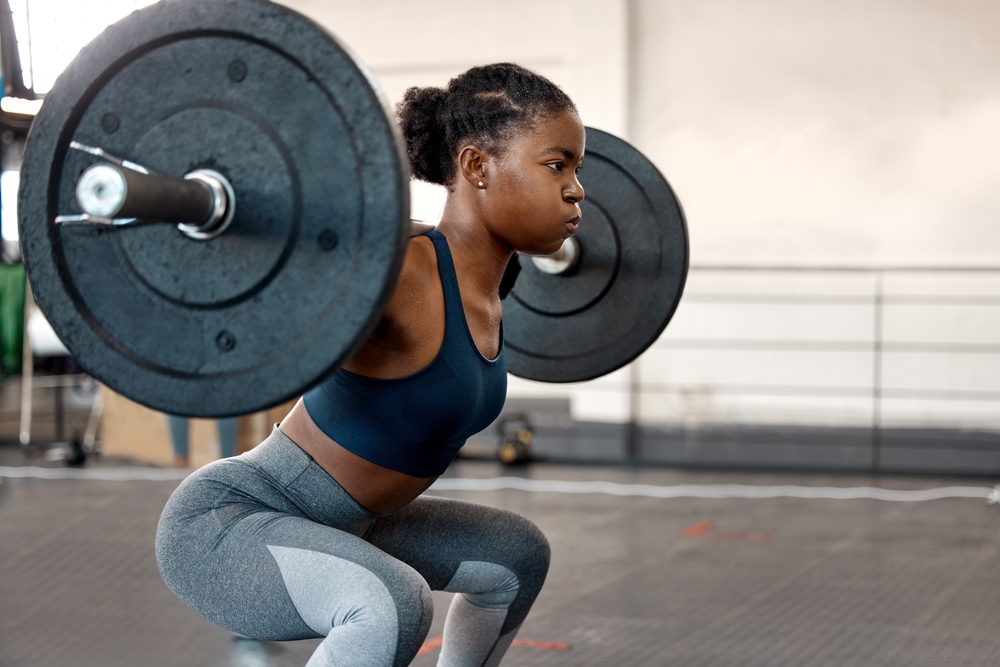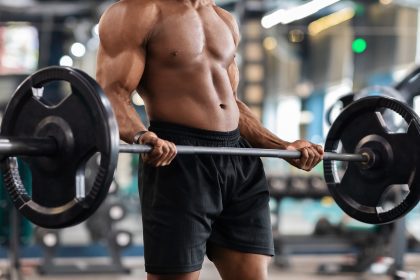The pursuit of stronger, more defined legs and glutes doesn’t require expensive equipment or lengthy gym sessions. With this innovative 20-minute bodyweight routine, you can achieve remarkable results by leveraging strategic exercise sequencing and proven biomechanical principles. Developed as part of the Women’s Health 30-Day Workout Challenge, this workout is designed to deliver impressive outcomes while respecting your time constraints.
The science of bodyweight training
Research in exercise physiology demonstrates that properly structured bodyweight exercises can effectively build muscle and improve functional strength. This routine takes full advantage of these findings by focusing on optimizing muscle fiber recruitment and metabolic response. The key to its success lies in using carefully calibrated time intervals and movement patterns that ensure each rep counts, promoting muscle engagement without requiring expensive gym equipment.
Bodyweight training, as the name suggests, utilizes the body’s own weight as resistance, making it accessible for virtually everyone. Research supports that when executed with proper form and structure, bodyweight exercises can not only build strength but also increase endurance and flexibility. By focusing on functional movement, you engage multiple muscle groups in each exercise, ensuring a more efficient and effective workout. This routine is designed to meet you where you are, whether you’re a beginner or more experienced, and gradually build muscle and tone without the need for a gym.
Understanding AMRAP methodology
The workout employs the AMRAP (As Many Reps As Possible) protocol, a training approach that combines cardiovascular conditioning with strength development. AMRAP allows participants to work at their optimal intensity while maintaining proper form, making it adaptable for various fitness levels. This method pushes you to perform as many repetitions of an exercise as possible within a set period, ensuring that you consistently work at your peak capacity.
AMRAP is a time-efficient training style, promoting both strength gains and cardiovascular improvements. The beauty of this system lies in its versatility—whether you’re aiming to increase endurance or build muscle, AMRAP training can be adjusted to meet specific goals. By utilizing this method in your workout, you’re able to maximize the benefits of each round, stimulating muscle growth while also improving cardiovascular fitness. For a 20-minute workout, it’s a highly effective strategy for targeting both strength and stamina.
Workout architecture
The routine’s structure follows evidence-based principles of exercise progression. It’s designed with a balanced approach to maximize effectiveness within a short timeframe. The workout begins with a strategic warm-up sequence to prepare the body for more intense exercises, followed by progressive rounds that increase in intensity. This approach ensures that your muscles are adequately prepared for the challenges ahead, while also providing optimal rest intervals for recovery.
Each of the three rounds follows a systematic progression. The first round introduces foundational movements that focus on precision and alignment, such as air squats, single-leg deadlifts, and dynamic jumps. These exercises are designed to activate key muscle groups, building strength and stability from the ground up. The second round incorporates more complex movements, such as kneeling extensions and walk-up squats, to engage deeper muscles and improve mobility. The final round challenges your endurance and stability with movements like isometric split squat holds and standing splits.
Essential preparation
While equipment requirements are minimal, proper preparation maximizes workout effectiveness. To get the most out of this routine, it’s essential to ensure you’re set up for success before you begin. Start by securing a comfortable, well-ventilated space where you can move freely. An exercise mat is recommended to protect your joints, especially during floor exercises, and ensure proper alignment.
Hydration is another key component. Drinking enough water before and during the workout helps to prevent fatigue and keeps your muscles functioning at their best. It’s also important to wear comfortable athletic attire that allows for full range of motion. Tight clothing or ill-fitting shoes can restrict movement and hinder performance, so choose gear that supports your body and allows for natural movement.
Warm-up sequence mechanics
Each warm-up movement targets specific muscle groups while promoting joint mobility. Warming up properly is a critical part of preventing injury and ensuring that your body is ready for the more intense exercises to come.
The warm-up begins with dynamic hip mobilization, where the hip circle sequence activates the hip flexors and external rotators. This exercise prepares the body for more demanding leg movements by promoting fluid circulation in the hip joint. Next, the workout incorporates posterior chain activation through down-dog leg kicks, which combine shoulder stability with hamstring and glute engagement. These movements help activate the muscles necessary for power development in subsequent exercises.
Lateral strength development is also a focus of the warm-up, as side leg lifts target the often-neglected hip abductors. Strengthening the lateral muscles improves overall stability and reduces the risk of injury. The warm-up concludes with core integration exercises, such as alternating leg lowers, which help engage your core and establish good form for the main workout.
Progressive intensity rounds
The workout’s main sequence consists of three distinct rounds, each building upon the previous. The first round introduces precision air squats, which focus on proper depth and alignment. This movement is followed by single-leg deadlifts to develop unilateral stability and dynamic pencil jumps for power development. These foundational exercises ensure that your muscles are activated and working together to build strength.
In round two, more advanced movements are introduced. Kneeling extensions target specific gluteal activation, while walk-up squats combine mobility with strength, challenging your flexibility and control. Bridging sequences are also incorporated to integrate the posterior chain, ensuring that all major muscle groups are engaged. The final round increases intensity with isometric split squat holds, which challenge static strength, and standing splits, which combine flexibility with control.
Recovery and progression
Proper execution of this routine includes strategic rest intervals between rounds, allowing for optimal muscle recovery while maintaining an elevated heart rate. These rest intervals not only provide your muscles with the necessary recovery time but also keep your metabolism elevated, maximizing calorie burn and muscle engagement throughout the workout. The balance between work and rest is key to both strength development and metabolic benefits.
As part of the Women’s Health 30-Day Fitness Challenge, this workout is designed to help participants progressively build strength and endurance, with each session building on the last. With consistency and proper form, you’ll see measurable improvements in leg and glute strength, endurance, and overall muscle tone.














